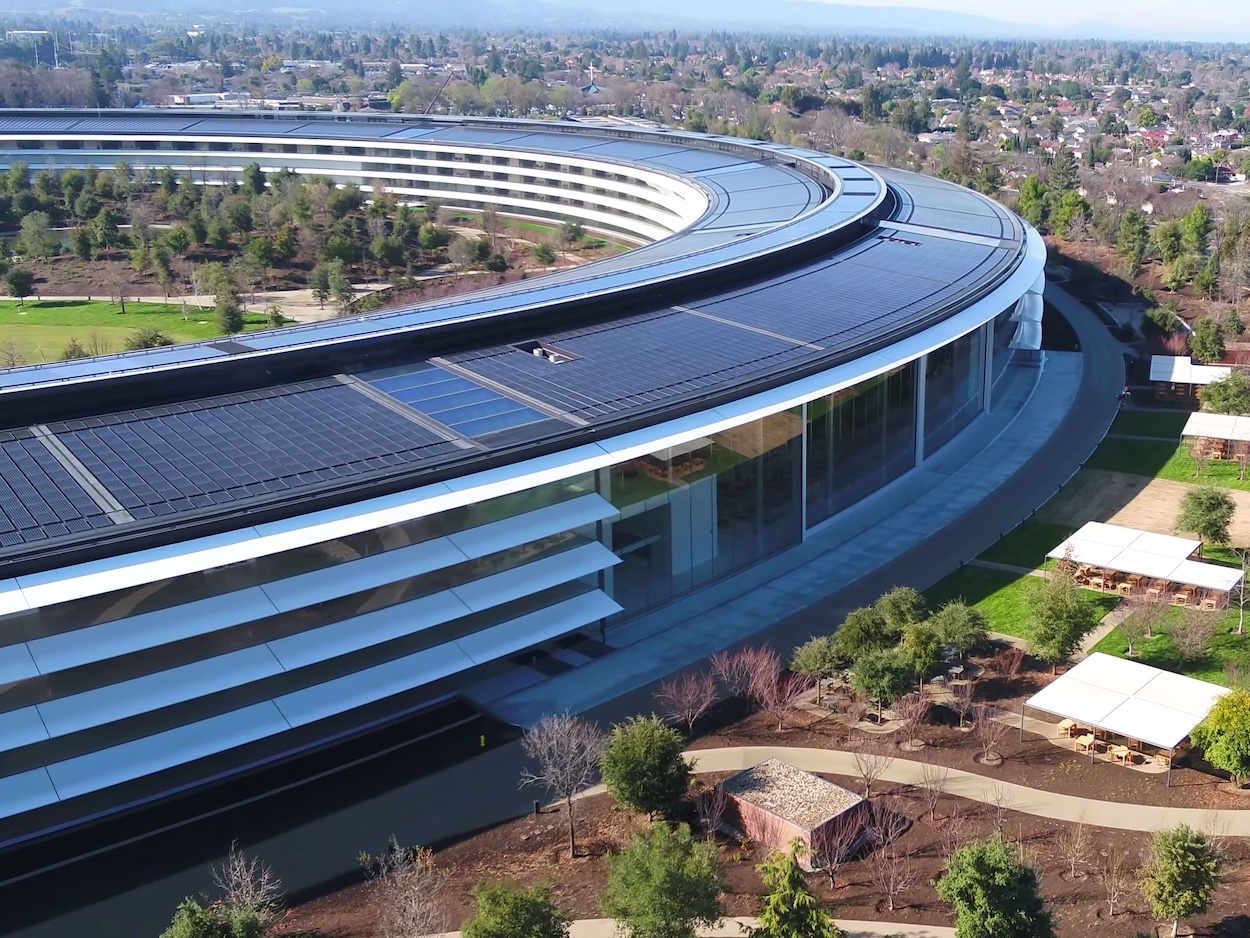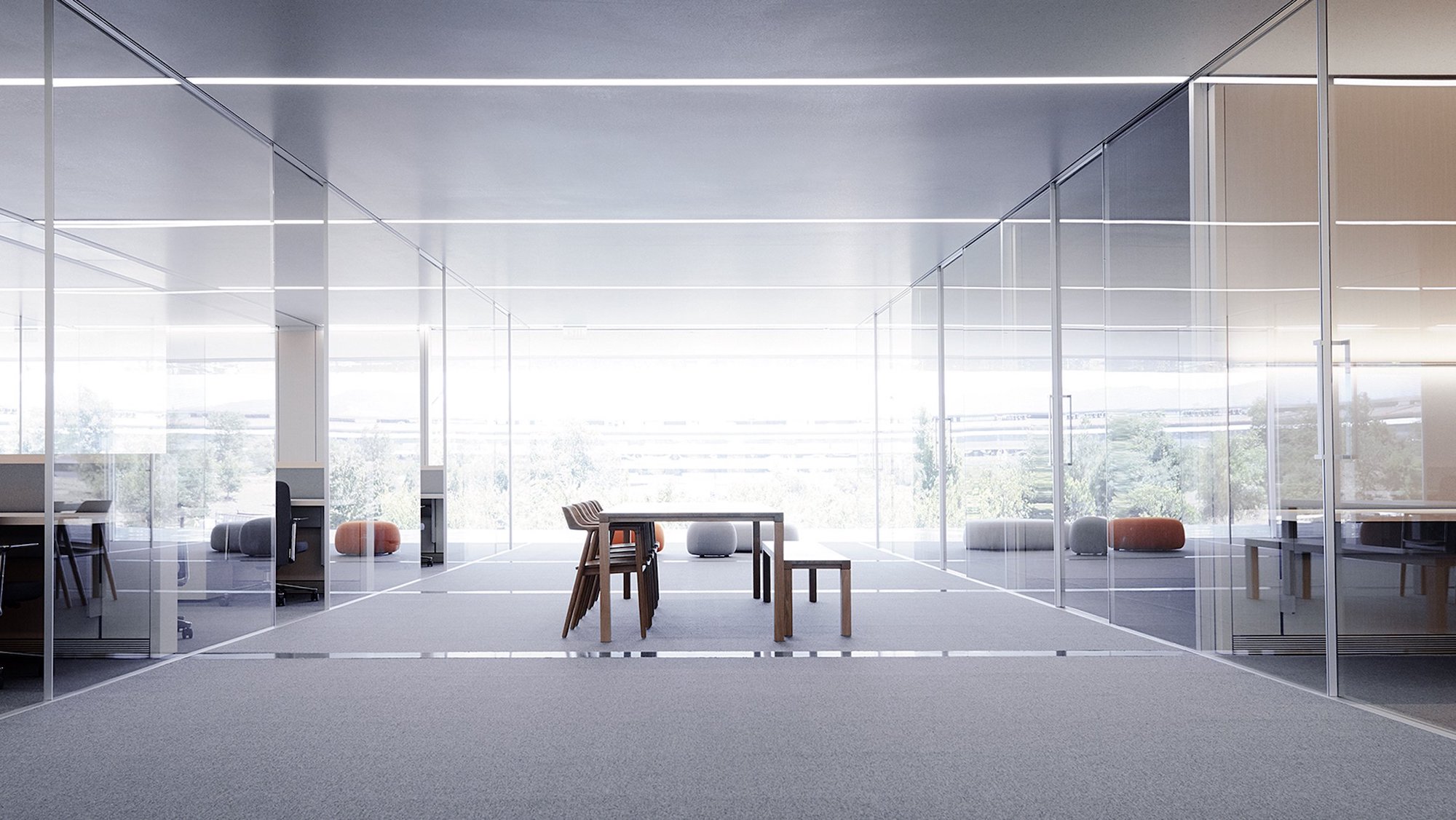Apple Park is a highly secretive place. Until recently, some of the only peeks inside the tech giant’s enormous, ring-shaped campus in Silicon Valley have come from (likely forbidden) iPhone snapshots employees posted to Instagram. Designed by Foster + Partners, the four-story “Spaceship” houses 12,000 employees hard at work researching, developing, and designing the company’s array of tech products: the iPhone, MacBook Pro, and AirPods, among many others. This operation was previously led by chief design officer Jony Ive, who departed in 2019 after a 27-year tenure. Since then, Apple has revealed little about its design team—the people, products, and process have all been shrouded in mystery.
A new interview with Wallpaper, however, seeks to lift the curtains and delve into Apple’s approach to product development in the post–Jony Ive era. But as Bloomberg notes, the story is packed with cliches and buzzwords, as well as cursory nods toward the virtues of research, iteration, and cross-pollination. Then comes the nail in the coffin: “If the access Apple granted was intended to distinguish the company’s designers, it actually did the opposite. Perhaps the most interesting revelation of the piece was that the studio, once a source of invaluable corporate cachet for Apple, now seems kind of boring.” Ouch.
It’s hard to disagree. Evans Hankey and Alan Dye, the executives leading up the Apple Design Team, reveal little beyond remembering Steve Jobs imparting surface-level nuggets of wisdom such as “design is not just a veneer” and “it’s not just how things look, it’s about how things work.” Even when discussing their design approach to newer products such as the Apple Watch, the two play it safe, relying on language used by CEO Tim Cook and contrived descriptors from press releases (i.e. “the most personal product we’ve ever made”) that leaves most of our questions unanswered. Proof positive: “We care a lot about making great products, but we’ve worked equally hard at making a great team and culture,” Dye says. “A lot of that came from the beginning. Steve defined Apple by its design.” And when pressed for insight on AirPods, they merely shared that Apple did extensive ergonomic studies on ears to make sure the resulting designs offered a nice fit.
While this episode could be perceived as Apple keeping a tight grip on its narrative, it also indicates a new crop of leaders who perhaps lack the gumption to tantalize us with incisive commentary about our current relationship with technology—and create the generation-defining products to back them up. (As Bloomberg also notes, all the products discussed in the interview, while goundbreaking technological achievements, were designed while Ive was at Apple, indicating the company is still defined by a luminary who has long departed.) We have to ask: Why does Apple feel so stilted lately? What happened to the je ne sais quoi long infused into the company’s hardware? We think Tony Fadell might like to have a word.


